Tag: GCC
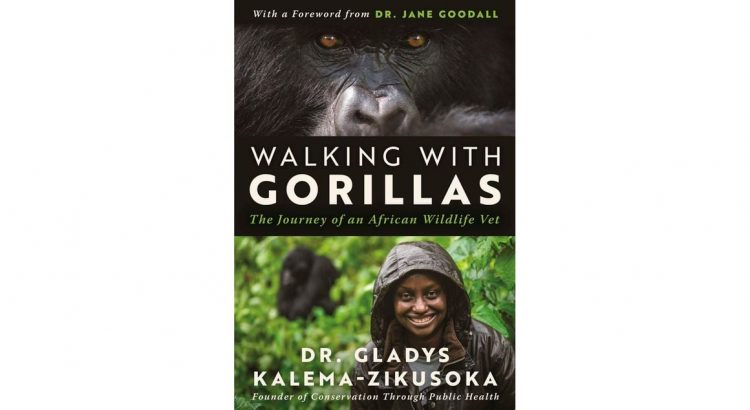
Uganda’s first wildlife vet pens her journey to rescue gorillas
SOURCE: The East African
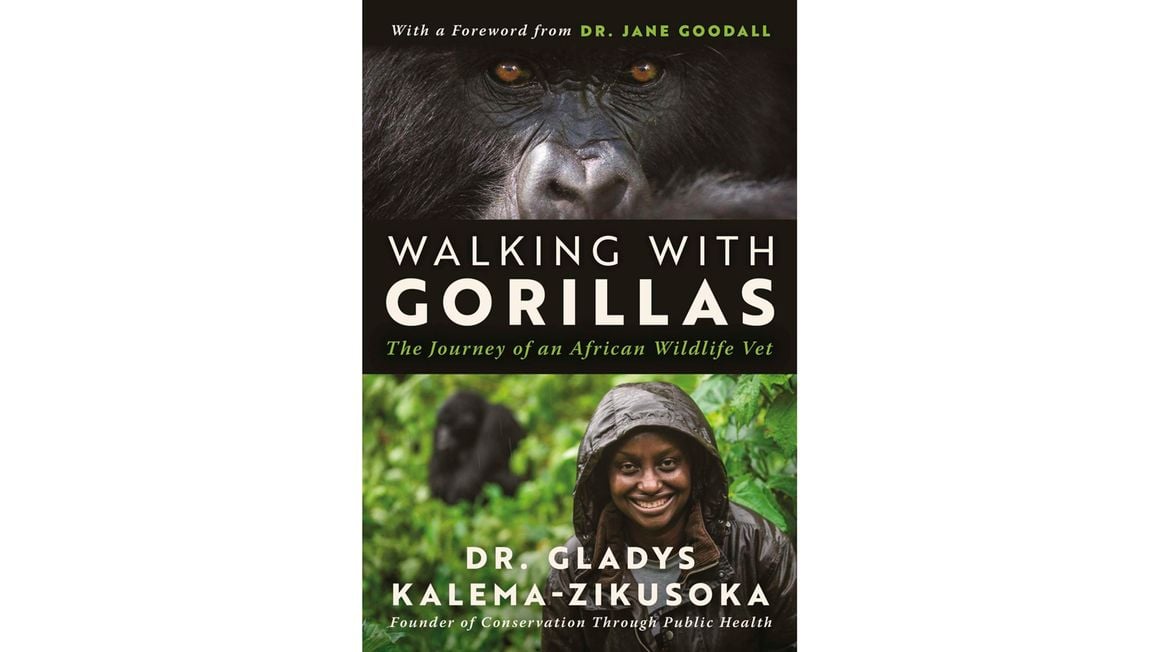
In tandem with the 20th anniversary of Conservation Through Public Health being celebrated now, is the amazing book published this year, Walking with Gorillas by Gladys Kalema-Zikusoka, who has made history by becoming Uganda’s first wildlife veterinarian and founder of CTPH, a globally acclaimed community programme ensuring the survival of the mountain gorillas of Bwindi Impenetrable National Park and the local communities.
A recipient of multiple international awards, Gladys narrates her story of carving out a career for herself in wildlife conservation that has her now recognised as an authority on mountain gorillas with her name on the Royal Veterinarian College (RVC) Wall of Achievement as one of the seven alumni with unique careers in the world. RVC is where she graduated from in the UK in 1996.
Life and work journey
When she began working as a wildlife vet in Uganda in the mid-1990s, there were 300 mountain gorillas in Bwindi and listed on the IUCN Red list as ”Critically endangered”.
Today Bwindi’s population of mountain gorillas is 459 and increasing, mostly thanks to CTPH. The global population (found only in Bwindi and the Virunga mountains straddling Rwanda and the Democratic Republic of Congo) is 1,063.
The last in a family of six siblings, Gladys was born into a family of political leaders on January 8, 1970, in Kampala with Idi Amin coming into power the following year.
Uganda descended into a decade of turmoil during Amin’s rule of terror marked by looting and bloodshed. Soon after her second birthday, her father, William Wilberforce Kalema, a former Cabinet minister under President Milton Obote, was abducted and murdered by Amin’s soldiers. She attributes much of her success to her mother Rhoda.
With an innate love for wildlife, despite growing up in a culture that sees animals having no souls, by age 12 Gladys had decided she wanted to be a vet. At 19, she enrolled at the Royal Veterinary College in the UK where she was the only woman of African origin in her class.
Her focus now was on not just becoming a vet but a wildlife vet to save Uganda’s decimated wildlife.
In an exciting time, she treats captive wild species in UK zoos, but the groundbreaking moment is when she attends a talk by Dr Barkley Hastings, the first vet to work on the mountain gorillas in Rwanda which fuels her growing interest in the primate.
As a student, her journey takes her to conducting research on chimpanzees and on mountain gorillas in Uganda. But it also coincides with one group of gorillas contracting scabies, the first disease outbreak discovered at the Uganda Wildlife Authority in 1996.
The group was raiding the farms on the edge of the forest and the farmers erected scarecrows dressed in their discarded clothes full of scabies-causing mites. Humans have built a resistance to scabies, but the gorillas have not.
This realisation was to change her life.
In 1996, Dr Gladys returned home as the country’s first wildlife vet and employed at the Uganda Wildlife Authority to set up the veterinarian unit.
Read: Exciting hike through thick Bwindi forest
Despite the lack of funds, her passion blazes through the pages of how she struggles to treat wild animals in the wild and with each success, she convinces donors to fund the unit that eventually become fully fledged.
After four years at UWA, Gladys realised that if the mountain gorillas of the Bwindi Impenetrable Forest were to survive, the marginalised community living in poverty alongside the gorillas had to be fully involved with healthcare topping the list.
It led her to found Conservation Through Public Health in 2003 that has become a trailblazer in the world of wildlife and human conservation — despite being told by people that she would never attract funding because she was black.
The One Health model, later adopted by the United Nations as the One Health Approach focuses on people, animals and the environment.
When Gladys founded CTPH, her focus was on preventing zoonotic diseases transmitted between people and the gorillas working with the Village Health and Conservation team.
Today, the programme has expanded phenomenally, providing the villagers with access to education and health-care centres where there is treatment for scabies, HIV/Aids and family planning including establishing tele-centres and engaging the coffee farmers in fair trade coffee under the brand Kanyonyi, the silverback who was her favourite gorilla.
Village counselling
With the gorilla population increasing and the land remaining static, villagers are counselled on family planning and on re-investing the money to become self-sufficient and provide education for children.
Read: Uganda’s gorilla population increases
In an interview, Gladys states: “Big families means many mouths to feed, increasing land wrangles and forest fragmentation.”
The Covid pandemic brought gorilla tourism to a grinding stop. It saw poaching for bush meat (to put food on the table) re-surface resulting in the death of one gorilla.
After successful launches in Uganda, the US and UK, Walking with Gorillas will be launched in Nairobi in the coming months with Gladys in attendance. Published by Arcade Publishing 2023, the book is available on Amazon.
Since then, there’s been no gorilla killed in a snare.
Big win: July 2022, at the International Union of Conservation (IUCN) meeting in Rwanda, CTPH presented a policy brief with International Gorilla Conservation Programme and the Africa CSO Biodiversity Alliance on responsible great ape tourism, which was adopted, laying the protocol for gorilla tourism in the wake of the Covid pandemic to ensure the lives of both the ape and the human.
After successful launches in Uganda, the USA and the UK, Walking with Gorillas will be launched in Nairobi in the coming months with Dr Gladys in attendance.
Published by Arcade Publishing 2023, it is available on Amazon.
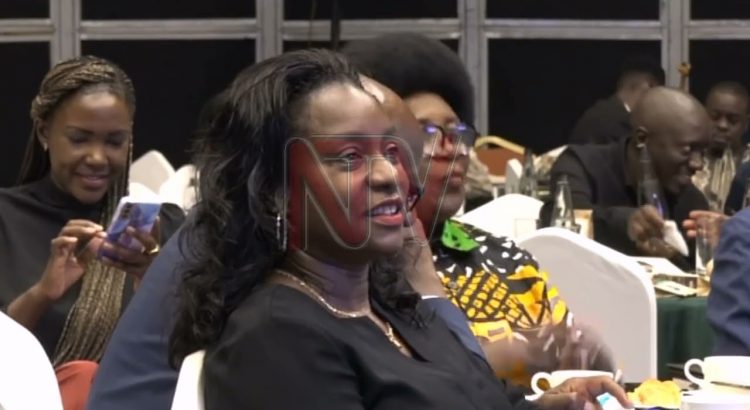
Tourism conservation takes gorillas from extinction
SOURCE: NTV
Gorillas remain the single most important item on Uganda’s tourism menu according to the Uganda Tourism Board. With conservation taking the mountain gorilla off the edge of extinction, the mantle is still left to the country to keep things from slipping back. This was part of the launch of the book “walking with Gorillas” authored by Dr. Gladys Kalema a renown Gorilla conservationist.

Uganda’s first wildlife vet calls for more gorilla tourism
SOURCE: FINANCIAL REVIEW
Dr Gladys Kalema-Zikusoka recalls a cheeky monkey that inspired her younger self to dream big. Today, as the country marks the 30th anniversary of gorilla tourism, she’s a key reason for its success.
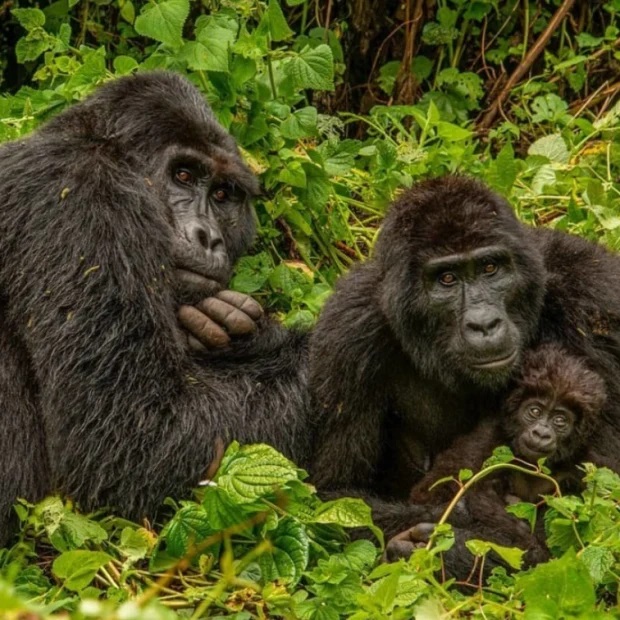
Uganda’s great apes owe a debt of gratitude to a pet vervet called Poncho. The monkey belonged to the Cuban ambassador to Uganda in the 1970s; he would sit on the gate of the neighbouring house in Kampala, where a young Gladys Kalema-Zikusoka lived with her family.
“I was fascinated by his fingers and fingernails that looked exactly like mine – so human,” she writes in her recently published memoir, Walking with Gorillas: The Journey of an African Wildlife Vet.
“He was my first venture into studying primates.”
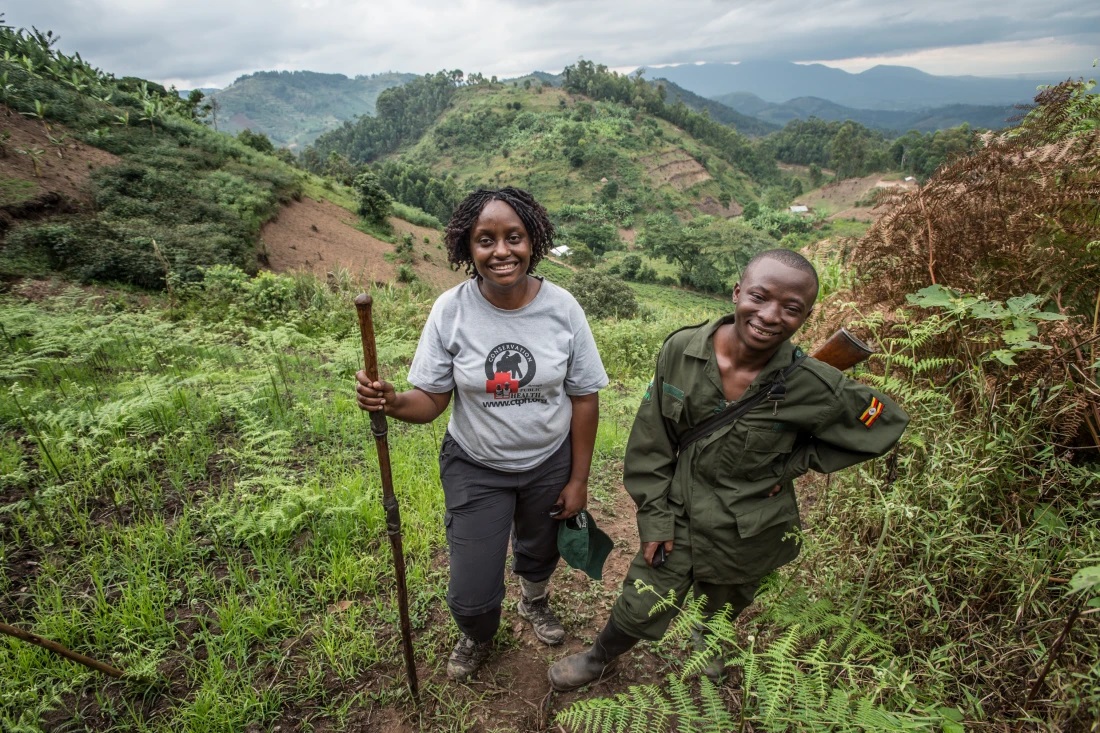
It was a time of tremendous political upheaval. Kalema-Zikusoka’s parents had both been involved in politics; when Idi Amin staged a coup in 1971, her father – a tireless advocate for social upliftment and a member of the overthrown government – was assassinated.
“I was only two years old, so I never got to know him,” she says. “And writing the book, I realised he had had so much impact on my life.”
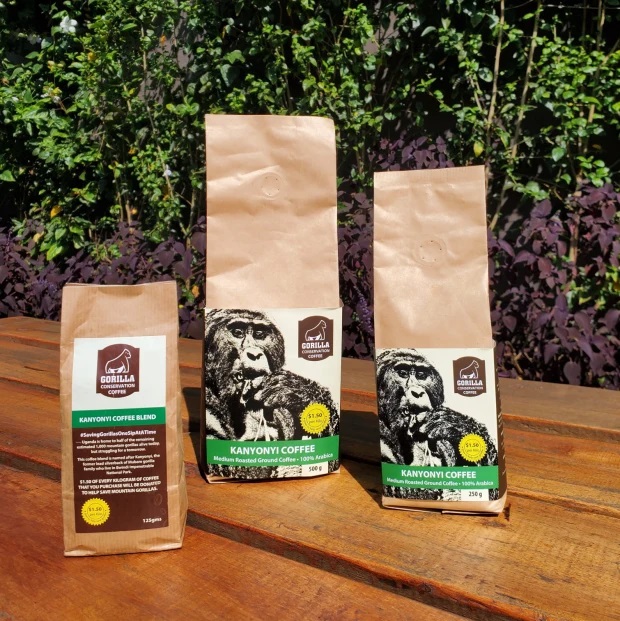
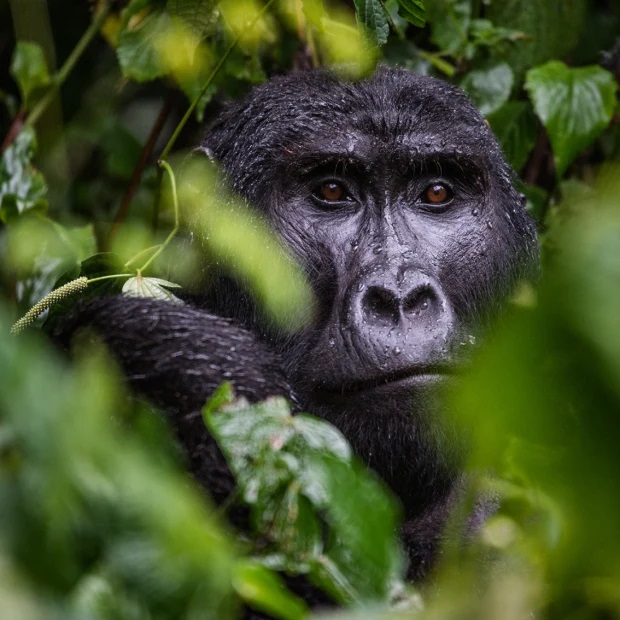
“I got to understand the role of tourism in conservation and how communities are benefiting from tourism,” she says.
This positive impact had been demonstrated in neighbouring Rwanda, where gorillas were attracting crowds. Uganda, by comparison, was flailing – even though about half the mountain gorilla population – now estimated to number 1063 – is found in Uganda (they also range across the Democratic Republic of Congo).

The experience also underlined the risks inherent in human-gorilla interaction: shared DNA renders great apes susceptible to human-borne diseases. As tourism improved, so the risks to habituated gorillas increased. After her stint at Bwindi, Kalema-Zikusoka presented a report to the then executive director of Uganda National Parks, Dr Eric Edroma, outlining the risks and the critical need for a dedicated wildlife vet. He told her that when she graduated, the job would be waiting for her.
The following year, degree in hand, she returned home and set up a vet unit with the Uganda Wildlife Authority.
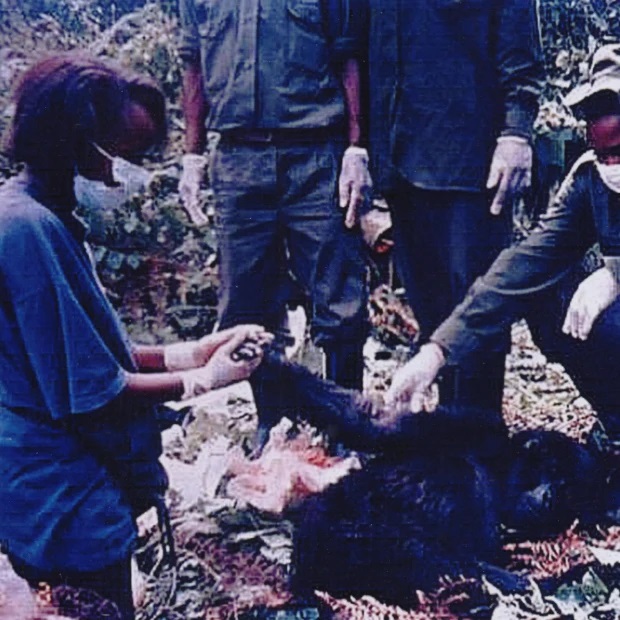
“There were so many firsts,” she recalls. “No-one thought you should even touch a wild animal to treat it. It was always [about] breaking barriers. I’d meet resistance, but then I’d also meet people who were supporting me. I worked with them, and we’d get it done.”
Kalema-Zikusoka shaped her job description on the run: one day she’d be translocating giraffes, the next she’d be deep in the rainforest removing a snare from a gorilla’s limb. In-between, she married and had two children, lobbied for funding and built networks with government departments, academics and conservationists including primatologist Dr Jane Goodall. In the forward to Kalema-Zikusoka’s book, Goodall calls her an “inspiring example” who “has made a huge difference to conservation in Uganda”.
Soon after the vet unit’s launch, the intractable link between human and gorilla health was amplified when a baby gorilla died during a scabies outbreak. The infection was traced to impoverished communities living on the park’s periphery; gorillas would often forage in their gardens. CTPH was established in response to the predicament, and in the two decades since has achieved untold success.
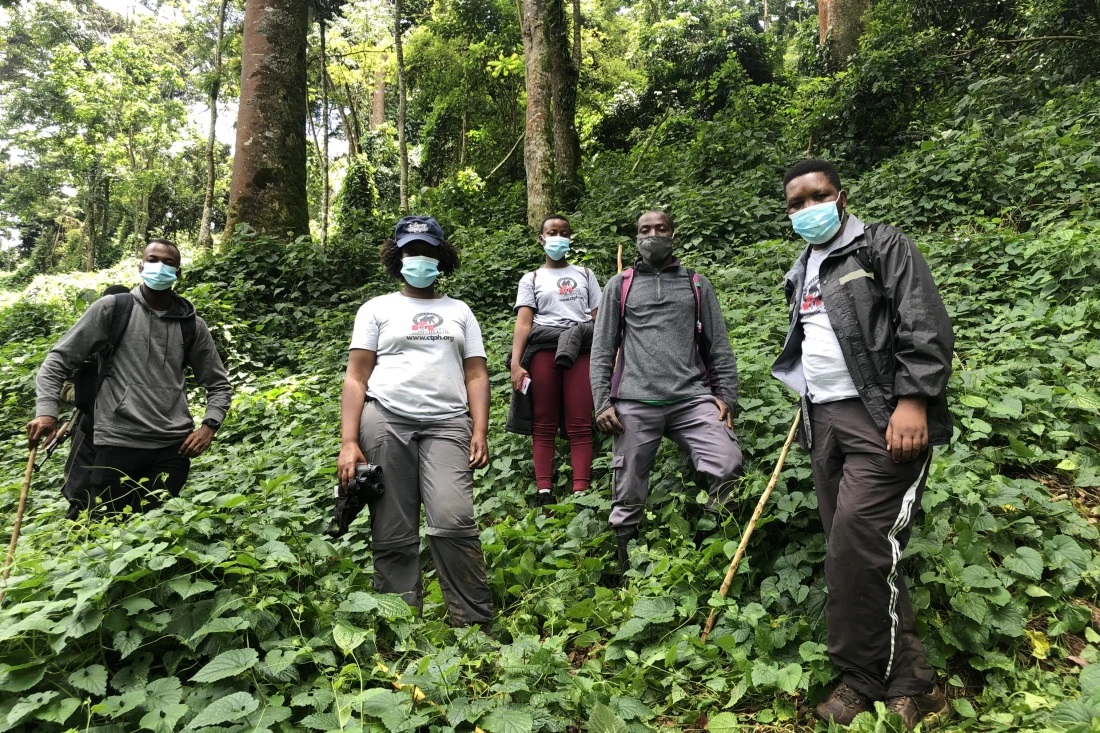
“We’ve made a lot of progress,” Kalema-Zikusoka says. “Gorillas are herded back [from community land] before they get sick. Since people are getting more healthy and hygienic we haven’t had a scabies outbreak, [and] giardia has almost disappeared in the gorillas. And as we attend to people’s health and their needs, they care more about the gorillas because we show them that we are not only concerned about the gorillas and the forest and the wildlife, but we also care about them. So, they’re more likely to want to protect the wildlife.”
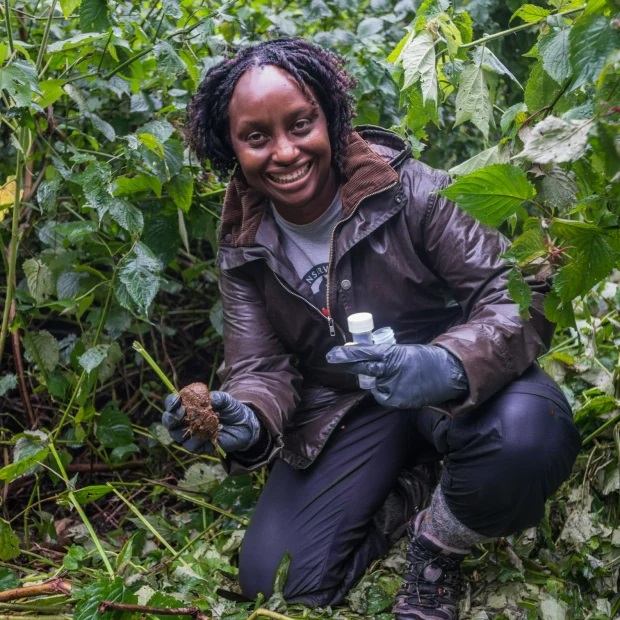
Such is CTPH’s success, it has won international funding and recognition for its work – which now includes environmental preservation, family planning programs and support for sustainable agricultural practices such as the coffee project. A laboratory monitors gorilla health and a community lodge offers accommodation overlooking a ripple of mist-plugged valleys at Buhoma, Bwindi’s primary gateway.
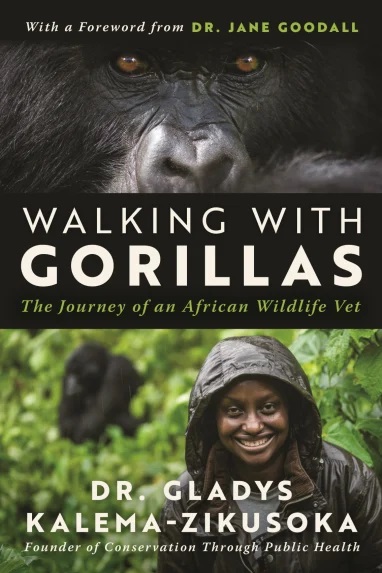
When COVID-19 struck in 2020, CTPH rose to yet another seemingly insurmountable challenge. Appointed to the government’s COVID-19 taskforce, Kalema-Zikusoka was able to prioritise an immunisation program for rangers and insist on mandatory vaccinations for tourists. She’d long lobbied for a mask mandate for gorilla tourists, and the pandemic helped facilitate this directive. But Bwindi’s habituated gorilla troops remain exposed.
“[Tourists are] wearing masks, but they still want to get close to the gorillas,” she says. “We are continuing to test for respiratory viruses, but also looking at other things like bacteria, salmonella, typhoid.”
And though the great apes have demanded the lion’s share of her time, Kalema-Zikusoka hasn’t forgotten the residents of Queen Elizabeth National Park, where her dream to become a wildlife vet took root all those years ago. Now stable, its lion population is nonetheless vulnerable. As tourism has cast a lifeline to gorillas, so she hopes it might change the fate of wildlife in Uganda’s lesser-known parks.
“The savannah parks are not getting enough tourists,” she says. “It is not enough just to see the wildlife – if you visit the communities, they’re less likely to kill the gorilla, the chimp, the lion, the elephant.
“Once a community member meets a tourist, they’re much less likely to poach, much less likely to destroy the habitat.”
As once a curious child who encountered a pet vervet and a park bereft of lions was wont to choose an unconventional path – one that would change the course of Ugandan conservation.
Catherine Marshall travelled to Uganda as a guest of the Uganda Wildlife Authority.
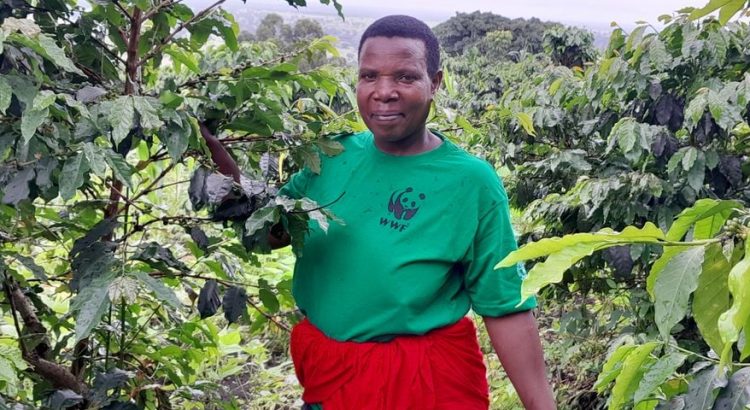
Reformed poachers turn to coffee farming for livelihood
SOURCE: MONITOR

What you need to know:
-
Reformed poachers, who are now farmers are supported through training in sustainable coffee farming and processing.
-
This improves the coffee quality, increases production and protects wildlife habitat.
Growing human populations in communities neighbouring protected areas have continued to become a major threat to the rising number of wildlife populations across Uganda. The continued habitat loss on the side of protected areas frustrate wildlife conservation efforts.
Human activities such as agriculture and industrialisation have forced hundreds of animal species into migration and facilitated human-wildlife conflict because activities exert more pressure on natural resources, which serve as natural habitats for animals.
In the past, people living around Queen Elizabeth National Park and Bwindi Impenetrable National Park would go into the parks for poaching and timber cutting as sources of food and livelihood.
These daily struggles caused mayhem because many members of the public lost their lives after they were killed by law enforcement teams and animals. In Rubirizi district, a number of family heads died guarding their crops against elephant raids
“Most of us are widows because our husbands were shot dead by rangers. They were found hunting in the park. Elephants destroyed our gardens and we felt like killing them in order to compensate ourselves with ivory. But we were aware that this was illegal,” Birungi Mwanje, a member of Kataara Women’s Poverty Alleviation Group (KWPAG), a group running projects that minimise environmental impacts on Queen Elizabeth National Park shares.
Coffee growing
To address this conservation challenge, communities in south western Uganda, have been organised into Arabica coffee growing and value addition groups. The two strands of growing and value addition have proven to be alternative sources of livelihood.
According to Moses Agaba, the group coordinator of KWPAG, women have since actively participated in growing of coffee and value addition.
“Most of these are widows whose husbands died in the park. They used to sell meat obtained from the park as a source of livelihood. Today, they are now busy processing coffee and they are earning a living. A woman who is busy roasting coffee cannot send her son to the park for meat,” says Agaba.
The group known as Kataara Women’s Roasted Coffee Beans, collects red coffee berries from their own gardens and out growers, process it into roasted berries or powder and sell it to tourists or hotels, where they get more yields.
“From out growers, we buy one basin of red coffee at Shs2,000 and after processing it, a basin goes for up to Shs 374,429 and to us, this is a profitable business. We cannot go back to the park,” women coffee farmers say.
During the peak season, the group fetches up to Shs2 to 3 million per month, whereas during off season, they get Shs600,000-Shs800,000. Immaculate Nyangoma Tumwebaze, the group chairperson, says they chose coffee growing after they found out that coffee cannot be eaten by elephants. Aside from coffee farming, do they do other activities such as turning elephant dung into paper and art objects, which they sell to earn money. Coffee growing also helps the residents protect their soil from erosion
Supporting community tourism
When tourists visit the Kicwamba community, where KWPAG is located, they support community tourism by visiting coffee gardens, processing centres, where they pay to see value addition activities and also end up supporting different interventions that protect the park.
In Rubirizi District, coffee contributes 68-70 percent to the economy, according to Habib Kaparaga, the district secretary for finance and administration. Areas engaged in coffee growing include Kicwamba, Katerera, Ryeru, Kirugu and Kyabakara.
Bwindi Impenetrable Forest National Park, where 1,063 mountain gorillas live today, is surrounded by isolated and impoverished communities. In the past, due to their close proximity both inside and outside the national park, preventable infectious diseases would spread between humans, gorillas and livestock.
This along with habitat encroachment, poaching and economic instability threatened the existence of the mountain gorillas, until Dr Gladys Kalema-Zikusoka, the first Wildlife Veterinary Officer of the Uganda Wildlife Authority Conservation Through Public Health (CTPH) came and established Gorilla Conservation Coffee as a social enterprise for neighbouring communities.
CTPH promotes biodiversity conservation by enabling people, gorillas and other wildlife to coexist through improving their health and livelihoods in and around protected areas and wildlife rich habitats.
Need for livelihood
Dr Zikusoka discovered that coffee farmers in Kanungu District were not being given a fair price for their coffee and were struggling to survive, forcing them into national parks to meet their basic family needs, specifically food and fuel wood.
Gorilla Conservation Coffee pays a premium of Shs1,872 per kilogramme, above the market price, according to Edward Sekandi, the CTPH operations manager.
“These are mainly former poachers, now reformed. They are converted into coffee growing. It is an intensive, engaging and profitable activity that they no longer want to go back to the park,” says Sekandi.
GCC prevents residents from practicing deforestation for charcoal and rallies them into shade tree planting in their coffee gardens in order to mitigate the impacts of climate change.
Sekandi says farmers are encouraged to use organic manure in their coffee gardens instead of artificial inputs, which he says spoil the soil structure.
Reformed poachers, who are now great farmers are supported through training in sustainable coffee farming and processing. This helps them to improve the coffee quality, increase production yield and protect the endangered gorillas and their habitat.
“When you are tracking gorillas, you tour coffee farms. We buy coffee from farmers and sell it to traders, roasters and retailers and the donations from every bag sold, goes to the work of CTPH,” says Dr Zikusoka.
Markets
The coffee is 100 percent premium Arabica, which is selectively harvested for only red ripe cherries, handpicked, wet processed and dried under shade. This coffee is tested for quality at every level. The coffee is roasted and packed to quality standards.
Each cup has a unique aroma with hints of caramel, butter notes and almond, with a citrus taste and a sweet finish. The group’s first blend is named after Kanyonyi, the former lead silverback of the Mubare gorilla group, located in Bwindi Impenetrable National Park.
The coffee is majorly sold in the US, Canada, UK, New Zealand, France and South Africa. GCC makes a special effort to support women coffee farmers, helping to provide opportunities for economic empowerment, disrupt male financial dominance and break and stereotypes.